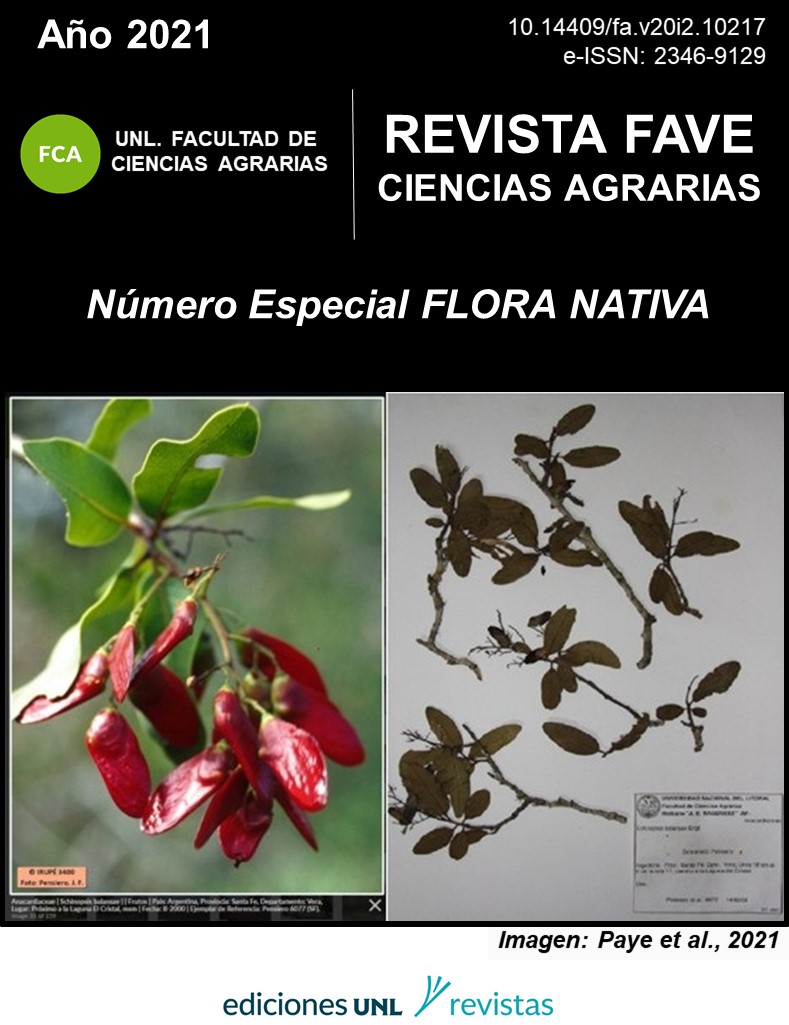Pheno-genotypic and symbiotic characterization of isolated rhizobia of Desmanthus Virgatus (l.) Willd. In soils of the province of Jujuy (Argentina)
DOI:
https://doi.org/10.14409/fa.v20i1.10268Keywords:
microsymbionts, native legumes, biological nitrogen fixationAbstract
Native forage legumes have great productive potential and an example of which is Desmanthus virgatus with a wide distribution in central and northern Argentina. The objective of the work was to carry out a pheno-genotypic and symbiotic characterization of rhizobia that form nodules in D. virgatus with a view to the integral sustainable use of said legume. For this, a collection of 17 isolates recovered from Jujuy soils was established. Phenotypic characterization allowed to recognize fast-growing rhizobia that showed an optimal development between pH 5 y 8, temperatures to 28 a 35°C, and in concentrations of 1% (w/v) of NaCl. Rhizobia with growth capacity were found under extreme conditions of pH 9 and at 40°C. The isolates were identified as belonging to Ensifer spp. and the genomic DNA amplification profiles showed little genetic diversity. The inoculation of D. virgatus with the strain 8L12.1 (Ensifer sp.) produced increases of 73% aerial dry biomass in the cultivation chamber and 124% in the field with respect to the uninoculated and unfertilized plants.

















